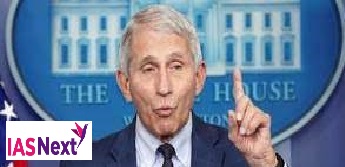CURRENT AFFAIRS
Get the most updated and recent current affair content on Padhaikaro.com
The Iran-US deadlock over nuclear capability
- IAS NEXT, Lucknow
- 02, Dec 2021

Reference News:
After a gap of five months, Iran, Russia, China and the European countries resumed negotiations in Vienna to revive the 2015 nuclear agreement, known as the Joint Comprehensive Plan of Action (JCPOA), that had sought to restrict Iran’s nuclear programme.
- As Iran has refused to hold direct talks with the U.S., European officials will shuttle between the Iranian and American delegations, exchanging talking points and seeking common ground.
What were the terms of the nuclear agreement?
- The 2015 agreement sought to cut Iran off a possible path to a nuclear bomb in return for the lifting of economic sanctions.
- Iran maintains that its nuclear programme is peaceful, a claim disputed by many international powers.
- At the time of the agreement, Iran had two nuclear enrichment plants— Natanz and Fordow — that were enriching uranium at a higher purity than what’s required for a civilian programme, and had almost 20,000 centrifuges.
- Typically, low-enriched uranium, with less than 5% concentration of the fissile isotopes U-235, is used in nuclear power plants. While uranium with 20% and more purity is used in research reactors, the fuel with 90% purity is used in bombs. Centrifuges are used to enrich uranium.
- Reduce Purity & Stockpile: According to the 2015 deal, Iran agreed to cut its stockpile of enriched uranium by 98% to 300 kg and keep them at a low purity level of 3.67%.
- Open to Inspection: Restrictions were introduced on the number of centrifuges it could keep and Iran agreed to open all its facilities to the inspection of the International Atomic Energy Agency (IAEA).
- These measures meant that even if Iran reneged on the promises and decided to make a bomb, it would take at least one year (the breakout period) to manufacture enough highly enriched uranium and centrifuges to do so.
- In return for Iran signing the agreement, the US administration under Obama lifted sanctions on Iran.
What triggered the current crisis?
- US withdrawal from deal: In May 2018, U.S. President Donald Trump, Barack Obama’s successor, unilaterally pulled the U.S. out of the nuclear deal despite the UN certification that Iran was complying with all the terms of the agreement.
- Criticism of Inadequate Measures: Critics of the deal in USA as well as in Saudi Arabia and Israel argued that the agreement was inadequate to address Iran’s growing influence in the region.
- Scope for Rise of Iran: Critics of agreement argued that the lifting of the sanctions would leave Iran economically more powerful and raise its geopolitical profile, which would pose fresh challenges to America’s allies in West Asia.
- US need for new Items in Negotiation: The Trump administration also wanted to negotiate Iran’s ballistic missile programme as part of a new agreement.
- Breakdown of deal & return of Status quo: After pulling out of the JCPOA, the U.S. reimposed sanctions on Iran and then invited Iran for talks. Iran, on the other side, not just refused to talk with the Trump administration, but also resumed its nuclear programme.
Where do talks stand now?
- Joe Biden, during the campaign, had promised to revive the nuclear deal. After his election, he appointed a special envoy for Iran.
- Indirect talks with Iran through Europeans started immediately. But no agreement was reached after six rounds in Vienna.
- A change of Government in Iran made matters more complicated. Now, the Iranian delegation, appointed by the new Government of President Ebrahim Raisi, has come forward for talks, which has raised hopes for a breakthrough. But there still are several thorny issues.
- Iran has substantially stepped up its nuclear activities since 2019. It has installed more than 1,000 more advanced centrifuges at its plants, which can enrich uranium more quickly.
- Iran has also started enriching uranium to 20% purity or more, which is a technical step away from the weapons grade level.
- In February, Iran scuttled the IAEA’s oversight of its nuclear sights, but agreed to keep recording devices in place that would allow the agency to continue to monitor the plants.
- In recent months, Iran removed the IAEA camera from a factory in Karaj, outside Tehran, that makes equipment for centrifuges.
- According to some reports, the advances Iran made in its nuclear programme has reduced the current breakout time (to make nuclear bomb) to as little as a month, from a year when the deal was alive.
What future prospects does the negotiations hold?
- The Biden administration has said that it was ready to take necessary steps to revive the JCPOA, including removing sanctions, but it wants Iran to return to the agreement first — which means
- Iran should stop enriching uranium
- Ship out the highly enriched fuel as well as the centrifuges
- Open the nuclear sites for international inspection.
- Iran also says it’s ready to return to the deal but it wants the U.S. to remove all the sanctions first and give assurances to Iran that a future American leader would not go back on the promises as Mr. Trump did.
- As a result, the talks have reached a stalemate.
- In Vienna, the challenge is to find some common ground so that at least the process of reviving the deal can begin. Time is running out for all parties with Iran moving fast with its nuclear programme.